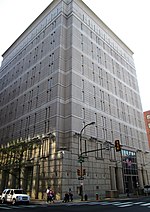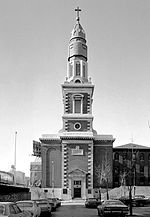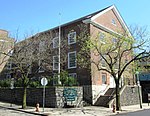Franklin Square station
1936 establishments in Pennsylvania1979 disestablishments in PennsylvaniaAbandoned rapid transit stationsPATCO Speedline stations in PhiladelphiaRailway stations closed in 1979 ... and 4 more
Railway stations in PhiladelphiaRailway stations in the United States opened in 1936Railway stations located underground in PennsylvaniaRailway stations scheduled to open in 2024

Franklin Square station is an unused, underground rapid transit station on the PATCO Speedline, operated by the Delaware River Port Authority. It is located under Franklin Square in Philadelphia, Pennsylvania, United States. Opened on June 7, 1936, the station was the first westbound and final eastbound station in Philadelphia, located just west of the Benjamin Franklin Bridge which carries trains over the Delaware River. The station has been opened for four separate intervals, each time eventually being closed for low ridership. The station is currently being refurbished and is expected to open once again in April 2024.
Excerpt from the Wikipedia article Franklin Square station (License: CC BY-SA 3.0, Authors, Images).Franklin Square station
North 6th Street, Philadelphia Center City
Geographical coordinates (GPS) Address Nearby Places Show on map
Geographical coordinates (GPS)
| Latitude | Longitude |
|---|---|
| N 39.95465 ° | E -75.14953 ° |
Address
American College of Physicians
North 6th Street
19106 Philadelphia, Center City
Pennsylvania, United States
Open on Google Maps










